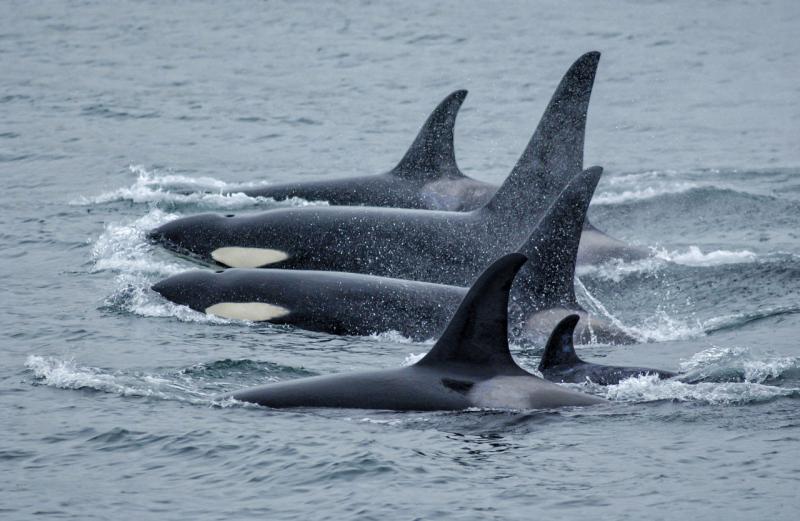NOAA Fisheries would like to clear up the disinformation surrounding a photo being circulated on social media of two orca whales taken as bycatch by a trawler in Alaskan waters. NOAA Office of Law Enforcement has confirmed that the photo is from an April 2020 incident. In that case, there were two independent fisheries observers aboard the vessel. The orca takes were reported promptly by the observers and vessel owner/operator to NOAA Fisheries, as required.
We do not have any recent reports of bycatch involving orcas off Alaska.
The United States’ science-based fishery management process is designed to provide optimum yield while preventing overfishing, minimizing bycatch, and protecting habitats where fish live. Section 118 of the Marine Mammal Protection Act allows for the incidental, but not intentional, takes of marine mammals in commercial fisheries. “Take” includes harassment, hunting, capturing, collecting, or killing of marine mammals. However, a marine mammal take is not legal unless it is reported by the vessel owners or operators through the Marine Mammal Authorization Program.
Bycatch of orcas in Alaska fisheries by any gear is very low. While incidental take of any individual marine mammal is concerning, NOAA Fisheries does not consider the low level of interactions between orcas and commercial fisheries in Alaska to have an adverse impact on any orca stock at a population level. No orca stocks in the Alaska region are listed as endangered, threatened, and/or candidate species under the Endangered Species Act.
Through the North Pacific Observer Program, our agency has rigorous methods for tracking catch and bycatch. At least two fisheries observers are required aboard all trawl catcher-processor vessels fishing off Alaska, so every haul is observed.
In addition to information collected by observers, vessel owners or operators must report to NOAA Fisheries all incidental mortalities and injuries of marine mammals that occur during commercial fishing operations. They must be reported within 48 hours of the end of the fishing trip under the law.
View mortality/injury reporting forms and instructions for submitting forms to NOAA Fisheries
In Alaska, you can learn more about these reporting forms by contacting Suzie Teerlink, at (907) 586-7240 suzie.teerlink@noaa.gov.



